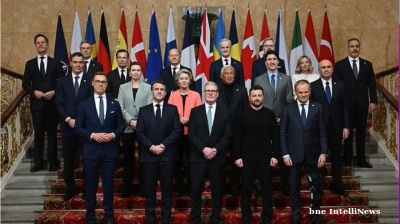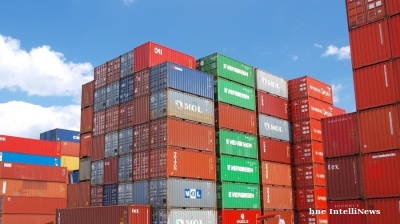We anticipated an upside surprise, but the number came in even higher than expected. October inflation reached 7.9% versus our 7.8% estimate. While energy is still to blame – natural gas in particular – it is clear that price increases have become more generalised. We expect year-end inflation at 8.0% and more rate hikes from the central bank.
Another month, another upside surprise in inflation. The October CPI data confirms that previous (and still to come) energy price increases have been transmitted to the wider economy. For certain, more energy-intensive items such as bakery products, price increases have reached a 10-year high, while for other items where seasonality should have had a downward impact – such as fruit – prices have remained sticky to the upside.
However, the most relevant price increases have remained concentrated in the energy sector, with prices for natural gas rising by 21.2% versus the previous month. This was something that we anticipated, but what we did not anticipate in full – and therefore our 0.1ppt forecast error versus the headline number – was the 6.5% month-on-month increase in fuel prices. The increase is above what we’d estimated for diesel and petrol prices, hence the difference must come from other items included in the fuel category, such as firewood, coal and things that people generally burn and/or can be used as fuel.
We estimate year-end inflation at 8.0% in 2021 and 4.0% in 2022. Next year’s average inflation should hover in the 5.5%-6.0% range.

Tomorrow, 11 November, the National Bank of Romania (NBR) will publish its latest Inflation Report. For now, we know that the updated forecasts show a “significant additional worsening…under the strong impact of supply-side shocks”. In line with our expectations, the NBR sees headline inflation only returning to the 1.5%-3.5% target range in the third quarter of 2023.
An optimist could say that the higher inflation prints now mean stronger disinflationary base effects next year. There is some truth to that, but that’s not how inflation will stay sustainably lower. We believe that the NBR will need to continue with its rate-hiking cycle until it reaches a terminal rate of 3.00% in mid-2022. If given the chance, we think that the central bank would like to do less tightening, but the context doesn’t seem to help their wishful dovish stance. In parallel, the FX rate will remain tightly managed and the 4.95 level should hold for most of 2022 as well.
Valentin Tataru is the chief economist for Romania at ING. This note first appeared on ING’s THINK.ING portal here.
Content Disclaimer: This publication has been prepared by ING solely for information purposes irrespective of a particular user's means, financial situation or investment objectives. The information does not constitute investment recommendation, and nor is it investment, legal or tax advice or an offer or solicitation to purchase or sell any financial instrument. Read more
Opinion

COMMENT: EU's LNG import ban won’t break Russia, but it will render the sector’s further growth fiendishly hard
The European Union’s nineteenth sanctions package against Russia marks a pivotal escalation in the bloc’s energy strategy, which will impose a comprehensive ban on Russian LNG imports beginning January 1, 2027.

Western Balkan countries become emerging players in Europe’s defence efforts
The Western Balkans could play an increasingly important role in strengthening Europe’s security architecture, says a new report from the Carnegie Europe think-tank.

COMMENT: Sanctions on Rosneft and Lukoil are symbolic and won’t stop its oil exports
The Trump administration’s sanctions on Russian oil giants Rosneft and Lukoil, announced on October 22, may appear decisive at first glance, but they are not going to make a material difference to Russia’s export of oil, says Sergey Vakulenko.

Armenia’s painful reorientation toward the West
Yerevan’s drive to break free from its dependency on Moscow is generating profound internal political turbulence and exposing it to new external risks, says a report by the Central Asia‑Caucasus Institute & Silk Road Studies Program.



